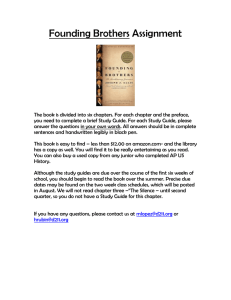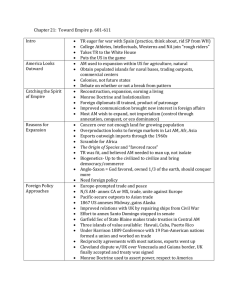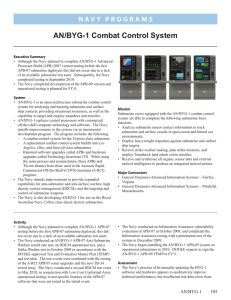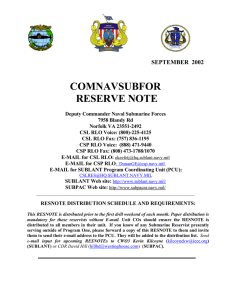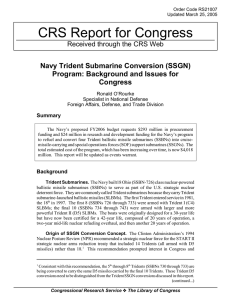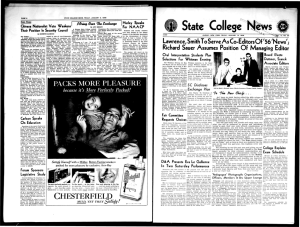AP Physics C - James B. Conant High School
advertisement
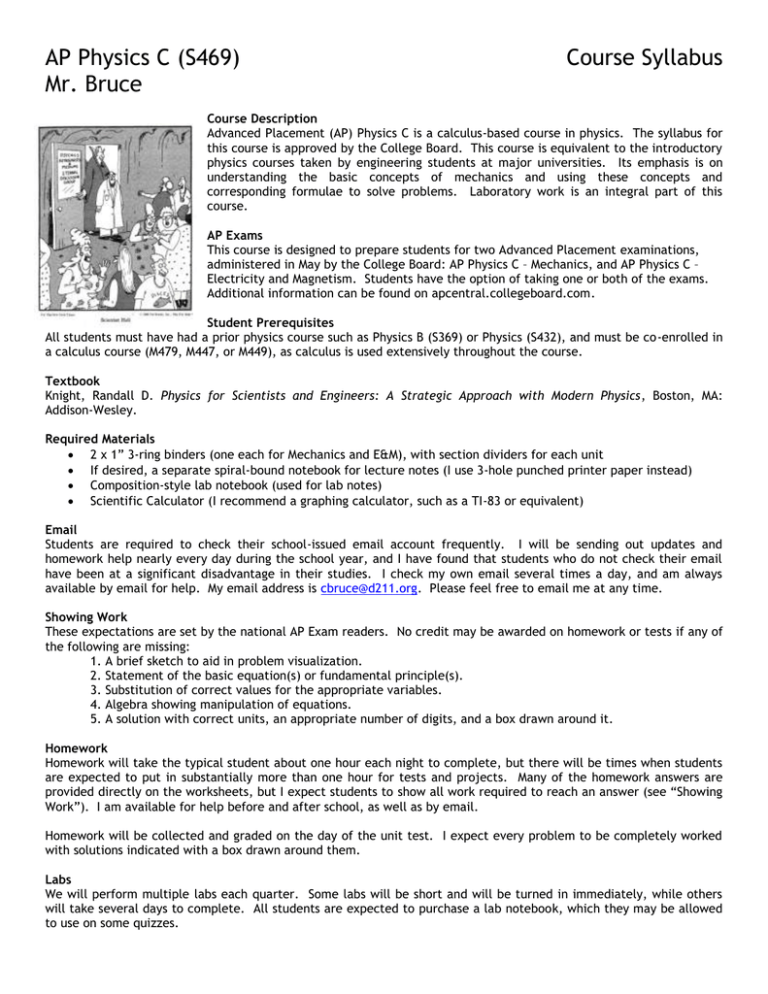
AP Physics C (S469) Mr. Bruce Course Syllabus Course Description Advanced Placement (AP) Physics C is a calculus-based course in physics. The syllabus for this course is approved by the College Board. This course is equivalent to the introductory physics courses taken by engineering students at major universities. Its emphasis is on understanding the basic concepts of mechanics and using these concepts and corresponding formulae to solve problems. Laboratory work is an integral part of this course. AP Exams This course is designed to prepare students for two Advanced Placement examinations, administered in May by the College Board: AP Physics C – Mechanics, and AP Physics C – Electricity and Magnetism. Students have the option of taking one or both of the exams. Additional information can be found on apcentral.collegeboard.com. Student Prerequisites All students must have had a prior physics course such as Physics B (S369) or Physics (S432), and must be co-enrolled in a calculus course (M479, M447, or M449), as calculus is used extensively throughout the course. Textbook Knight, Randall D. Physics for Scientists and Engineers: A Strategic Approach with Modern Physics, Boston, MA: Addison-Wesley. Required Materials 2 x 1” 3-ring binders (one each for Mechanics and E&M), with section dividers for each unit If desired, a separate spiral-bound notebook for lecture notes (I use 3-hole punched printer paper instead) Composition-style lab notebook (used for lab notes) Scientific Calculator (I recommend a graphing calculator, such as a TI-83 or equivalent) Email Students are required to check their school-issued email account frequently. I will be sending out updates and homework help nearly every day during the school year, and I have found that students who do not check their email have been at a significant disadvantage in their studies. I check my own email several times a day, and am always available by email for help. My email address is cbruce@d211.org. Please feel free to email me at any time. Showing Work These expectations are set by the national AP Exam readers. No credit may be awarded on homework or tests if any of the following are missing: 1. A brief sketch to aid in problem visualization. 2. Statement of the basic equation(s) or fundamental principle(s). 3. Substitution of correct values for the appropriate variables. 4. Algebra showing manipulation of equations. 5. A solution with correct units, an appropriate number of digits, and a box drawn around it. Homework Homework will take the typical student about one hour each night to complete, but there will be times when students are expected to put in substantially more than one hour for tests and projects. Many of the homework answers are provided directly on the worksheets, but I expect students to show all work required to reach an answer (see “Showing Work”). I am available for help before and after school, as well as by email. Homework will be collected and graded on the day of the unit test. I expect every problem to be completely worked with solutions indicated with a box drawn around them. Labs We will perform multiple labs each quarter. Some labs will be short and will be turned in immediately, while others will take several days to complete. All students are expected to purchase a lab notebook, which they may be allowed to use on some quizzes. Students must save all graded lab reports. Students will be required to present the reports as proof of having done these labs when seeking credit for this course in college. All course materials must be 3-hole punched and placed in a 3-ring binder for future reference. This will count as part of the final grade for the course after the AP examinations. Robotics Design Competition After the AP exam, students will design, build, and compete in a robotics design competition. Details of this year’s competition will be announced and posted to my website. Grading Homework, Labs, Quizzes, and Tests will be assigned points. The grading scale used in this class is as follows: A – 90% B – 80% C – 70% D – 60% F – Below 60% A Note on Test Grades - On the actual AP Exam, grades of “5” (Extremely Well Qualified) have historically been granted to raw percentages that are significantly lower than the score required for an “A” (90%) in this class. Because the tests in this class are designed to reflect the difficulty of the actual AP exam, I expect that all students will do every homework problem to compensate for comparatively low test averages. To the student: AP Physics C is the most intense course offered in high school. I fully expect you to spend at least one hour each night on the assigned problems, plus several additional hours two nights before each test to be ready for the test review day. With this level of commitment, you will find yourself struggling with the material. That is okay, and is why I have set up a number of resources to help you succeed: 1. My faculty website: Contains lecture notes and useful web links. 2. Office Hours: I am available before school, after school, and during my free periods. Come see me! 3. Email: If you have any questions, email me at cbruce@d211.org. Please have your parents sign here when they have read this syllabus: _______________________________________ To the parents: Your son or daughter has volunteered for the most difficult course in high school. They have my deepest respect for doing so, and I consider it an honor and a privilege to work with them. Please don’t hesitate to email me if you have any questions. I am looking forward to meeting you on Parent Night on September 23, 2010 at 7:00 pm! Sincerely, Chris Bruce James B. Conant High School cbruce@d211.org www.chs.d211.org/science/brucecj About General Physics: General Physics has served with distinction in a variety of civilian and military capacities. General Physics began life on an island in Alaska, where he enjoyed running around in the woods, performing physics experiments on the local flora and fauna. He traveled to Japan with his family to spend what would have been his sixth grade year in Japanese public school. Upon his return to the Great White North, he completed his secondary education, attained the rank of Eagle Scout, and, upon graduation from high school, relocated to Cambridge, Massachusetts to attend Massachusetts Institute of Technology. At MIT he studied mechanical engineering, was a proud member of the “world-famous,-unforgettable-no-matter-how-hard-you-try” MIT marching ban(ne)d, and faithfully arose at 4:30 every Monday morning to shine his shoes and march around while being yelled at by ROTC instructors. Upon graduation from MIT, Mr. Physics received a Bachelor of Science in Mechanical Engineering and was commissioned as an Ensign in the United States Navy. ENS Physics learned the basics of nuclear power at Naval Nuclear Power Training Center in Charleston, SC, and at Nuclear Propulsion Training Unit in Ballston Spa, NY, where he qualified as a Navy Nuclear Propulsion Officer. After completing Submarine Officer Basic Course, ENS Physics served on board the USS Miami (SSN 755), in Groton, CT, as Reactor Controls Assistant, responsible for operations of the submarine’s nuclear reactor, as Assistant Weapons Officer, responsible for the submarine’s weapons systems, and as Sonar Officer, responsible for the submarine’s sonar systems. While on board, Lieutenant Physics qualified as Navy Submarine Officer and as Navy Nuclear Engineering Officer. Following his tour on the USS Miami, LT Physics moved to Point Mugu, CA (just up the beach from Malibu) to the Naval Satellite Operations Center (NAVSOC), where he served as Ground Systems Department Deputy. Responsible for all the satellite control stuff (everything not up in space), he oversaw the successful launch of UFO-11, a US Navy communication satellite. Upon completion of his tour at NAVSOC, LT Physics was released from active duty service to pursue his lifelong dream of teaching. He moved with his wife to Chicago, earned a teaching degree from National Louis University, recently completed his tour as a Lieutenant in the Navy Reserve, where he moonlit as a research liaison for the Office of Naval Research and Naval Research Laboratory, and now teaches physics at Conant, where through a silent coup d’etat he commandeered the title of “General”. . General Physics believes that because he successfully learned this stuff, anybody can do the same. This includes you. He will not be sympathetic to your wretched excuses.1 1 General Physics doesn’t like excuses, but if you need to talk, Mr. Bruce is always available. Come see him in the science office, or email him at cbruce@d211.org.

